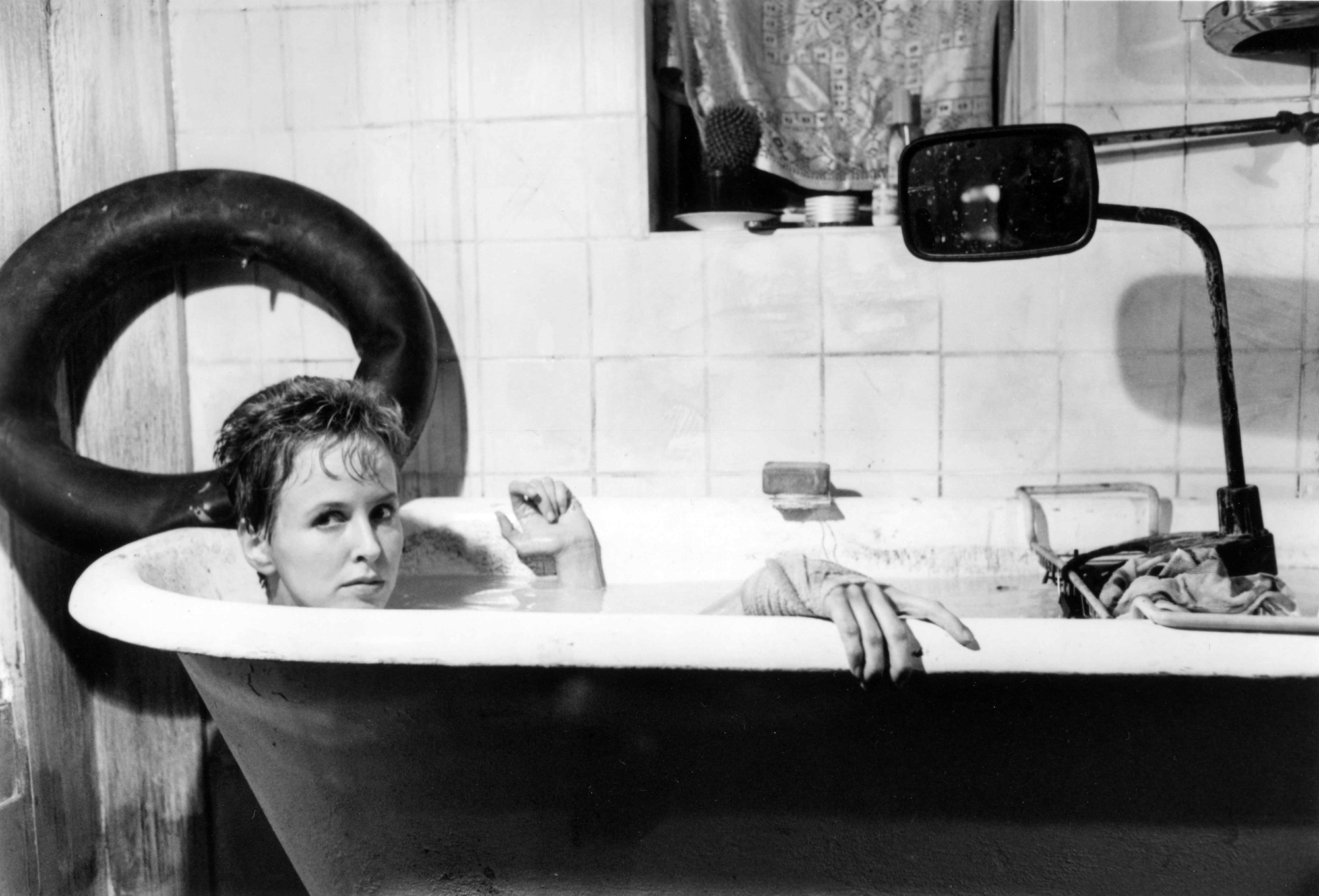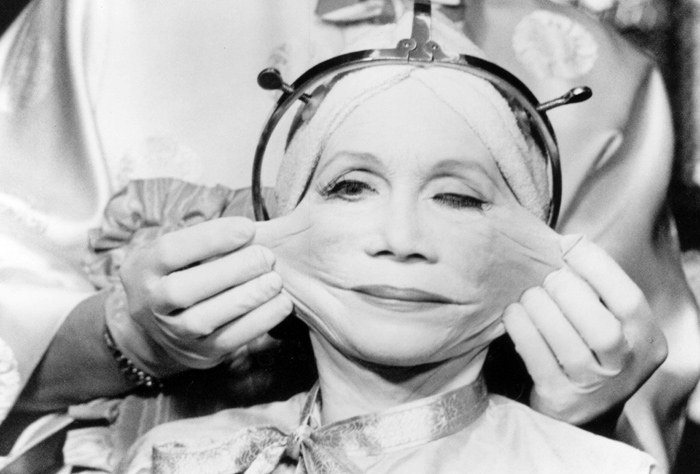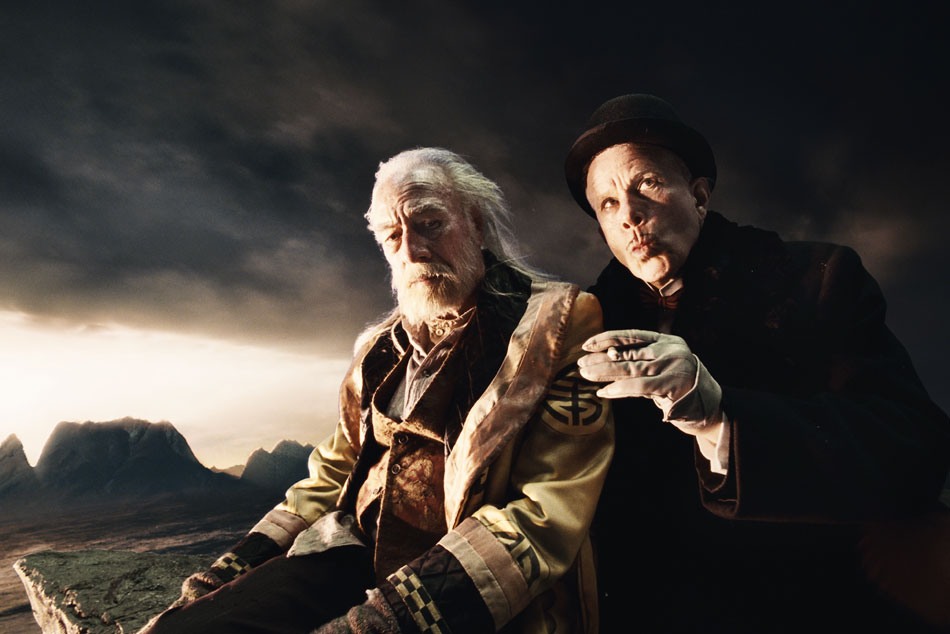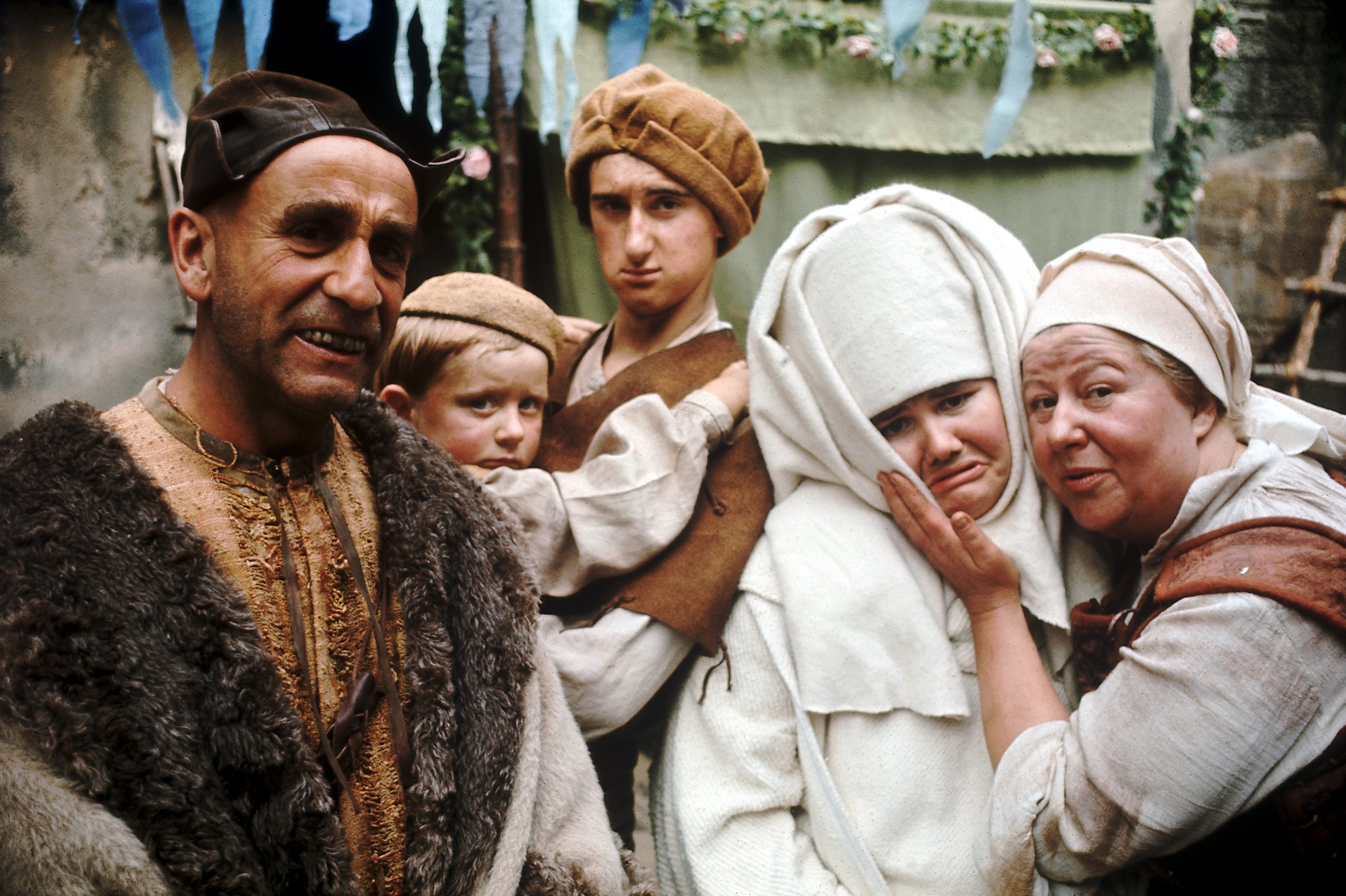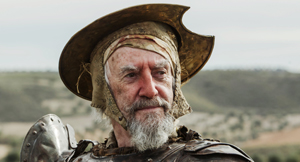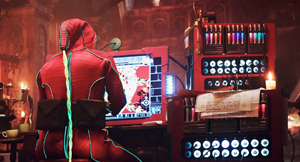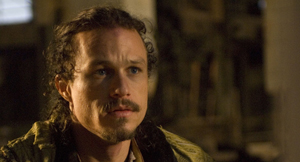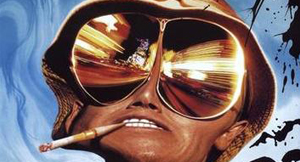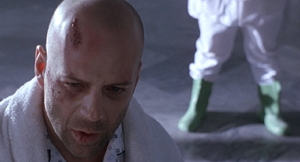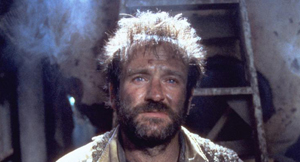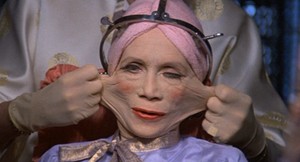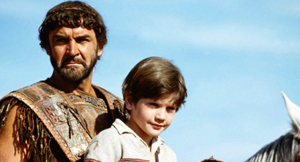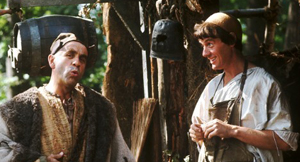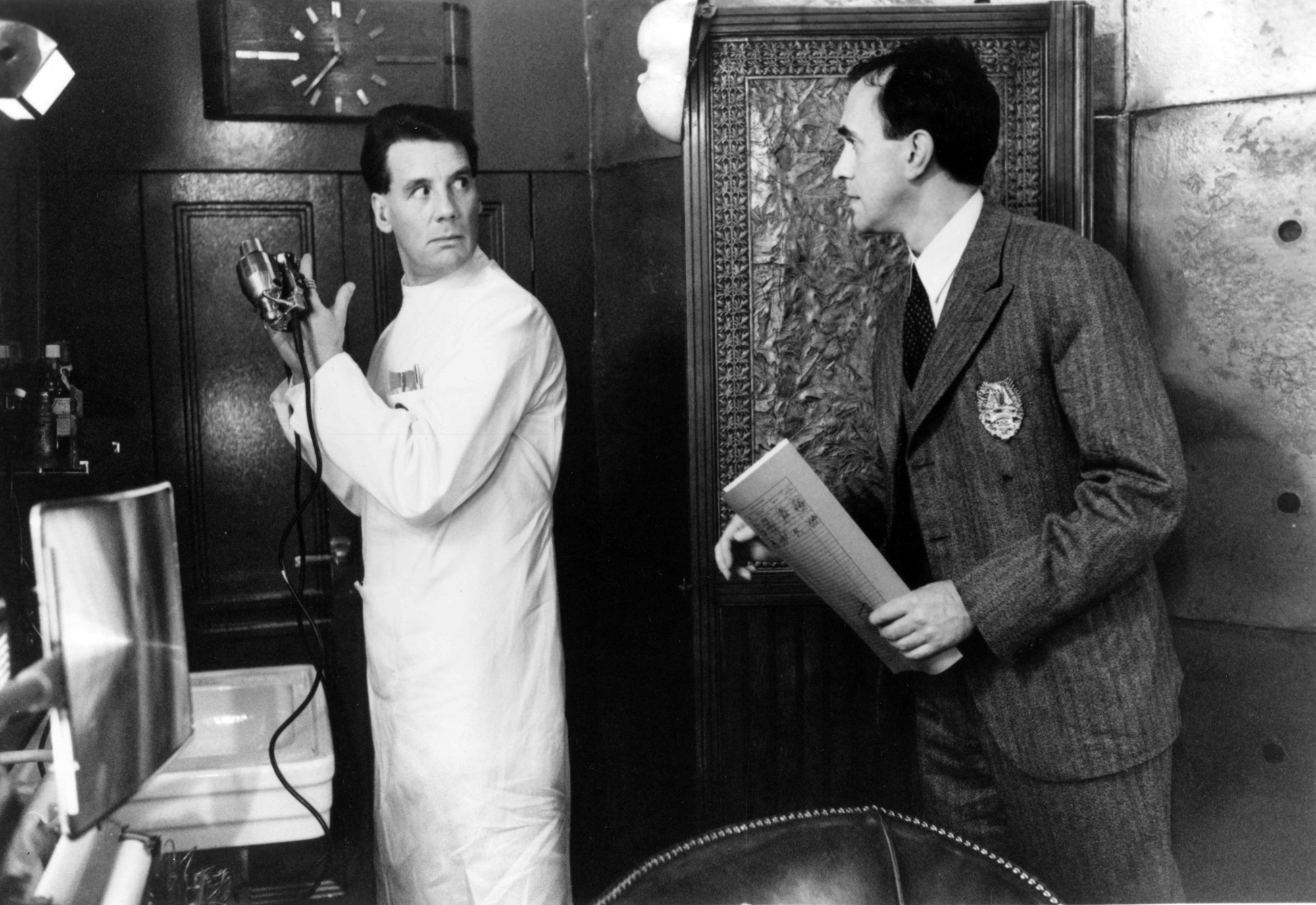
BRAZIL Frequently Asked Questions
Copyright 1994-1998 David S. Cowen
Release 1.4, Last-modified: 1998/7/17
Click here for the first page of Brazil FAQ
3. How many different versions of BRAZIL have been released?
Some would argue that too many have. At this point in time, four different versions have been released on the laserdisc format alone (not counting variations in language or letterboxing), and there have been minor changes between the theatrical and video releases. They are as follows:
(ET) The Fox European theatrical release
(AT) The American 132 minute theatrical and video release
(EV) The original European/Japanese video/laserdisc release
(FV) The “Final director’s cut” of the film on the Criterion Collection laserdisc box set, DVD and some video releases.
(SE) The Sheinberg edit, also known as the “Love Conquers all” version.
The following is a description of the differences between each version and the other versions. Which is the “real” BRAZIL? You be the judge.
The European Theatrical Release (ET) contains many items not in the American Theatrical and Video release (AT). These are:
The film opens with the time and location credits over a black background, not over the clouds present in the AT release.
Buttle’s daughter inquires as to how Father Christmas will come if they don’t have a chimney.
A brief scene involving Sam and his mother Ida entering the restaurant where they meet Mrs. Terrain and Shirley. They have to pass through a metal detector in order to gain entrance, and Ida’s present to Sam (one of the “Executive Decision Makers”, seen later in the movie) sets off the alarm.
In the restaurant, there is extra dialogue about how plastic surgery through an acid method is like a “delicate Rembrandt etching.”
After saying “Here’s looking at you”, there is an extended shot of Sam driving to Shangri-La towers.
In the European Theatrical release, the Samurai sequence is one long sequence (with some additional footage), whereas in the American version it is divided into three separate sequences.
Extra footage of Warren telling Sam to “get a new suit”.
There is a brief sequence in Jack Lint’s office where Sam nearly enters the torture chamber, but is yelled at by Jack’s secretary to use the “other door”.
Sam nearly bumps into Lime, wearing a cast, at Information Retrieval. Line is wearing the cast after being injured in a “desk tug of war” earlier in the film.
There is a small amount of footage of Spoor answering the phone in Sam’s apartment as saying “It’s for you,” then hanging up and indicating that they’ve requisitioned the apartment.
An “Interrogation” scene, where Sam is charged with all of the violations of the law he committed throughout the film, including “wasting Ministry time and paper.”
A “Father Christmas” scene where Helpmann visits Sam after his booking, Helpmann is dressed as Santa Claus. Among other things, Helpmann informs Sam that Jill Layton has been killed… twice.
The film ends starkly in the torture chamber, with no clouds surrounding Sam as he hums Brazil.
The European/Japan Video release (EV) adds the following scene not present in some theatrical prints of the European Theatrical release (ET), and that were never present in the American AT release:
A scene where Sam and Jill lie in bed after the implied consummation of their relationship. Jill has taken off the wig she was wearing in the scene before, and has a pink bow tied around her naked body. She says to Sam: “Something for an executive?” and he unties her.
The American Theatrical/Video Release (AT) adds a few things not found in the European Releases (ET & EV):
There are clouds that open and close the film in the American Release. Some of the footage of these clouds was extraneous footage from _The Never Ending Story_.
After watching Mrs. Lowry’s first plastic surgery treatment, Sam exclaims “My god, it works!”
The “Final director’s cut” (FV) is the European/Japan Video release (EV), with a few changes:
The film begins with clouds under the titles, like the American version, yet it ends with the original stark ending without clouds from the EV version.
A cut while Mrs. Terrain is talking about the “delicate Rembrandt etchings” is corrected to be less obvious.
There is extra footage before Spoor answers the phone in Sam’s apartment.
The Sheinberg Edit (the “Love Conquers All” version”) makes a number of very major changes to all of the above versions:
” After the AT cloud intro and the Central Services ad, the movie shifts to a highly edited version of the restaurant sequence. After the explosion, the Brazil logo appears.
” Man in white labcoat, instead of seeing interview with Helpmann, sees an “Arrest and detainment” broadcast regarding Tuttle. Footage of eye-level view as the man in the white lab coat stands on the file cabinet.
” Shot of nameplate on Buttle’s door before storm trooper showing Buttle and family in his apartment.
” Chimney comment, as per European version, shown right before “bust”. “Psycho” strings missing from soundtrack during bust.
One of the storm troopers issues a sarcastic “Happy Holidays” line after the receipts are signed.
” Music missing from “gunshot” scene. Extra shot of clerks watching gunfight while Kurtzmann calls Lowry. Kurtzman calls up a different part of the movie than in any other release (a man on a horse). Brief edit of clerks watching movie before Kurtzman leaves office. Kurtzman stutters before calling “Has anyone seen Sam Lowry?”
” An iris shot of Sam’s head to indicate dream sequence before going into the sequence where he flies in the clouds. Cloud sequence is surrounded by a big, opaque border as though to say “This is a dream! Make no mistake!”
” Shots in soggy toast breakfast sequence rearranged.
” Music as Sam enters information retrieval different, with an emphasis on the harp line. Shots, again, are rearranged. No police officer showing nuns a 9mm machine gun. Christmas muzak is emphasized. Dialogue between Sam and Jack is more stunted and abrupt. Sam sees his “dream girl” on the video screen, and Jack stutters as he notices that something is wrong. Fade to commercial after sequence.
” Dialogue between Sam and Kurtzmann is truncated. Sam spills his tea more graphically on the paper indicating he’s been promoted.
” Music and some foley work is missing from “mother’s surgery” scene. The line “My god it works” present in the American version is changed to a more emphatic “My GOSH it works!”
” The edit skips over restaurant and dream sequences to Sam waking up late at night with the heating problem. Music cues from truck “chase” sequence play over “This has not been a recording” message. Sam hangs up the phone with an emphatic “Oh, damn!” Harry Tuttle theme plays over Harry Tuttle’s entrance. Tuttle says to Lowry, “There aren’t many like you left” after scaring off Spoor and Dowser. Instead of humming when asked why he’s wanted, Tuttle gives the response “Setting a bad example. Ya know, little guys like us don’t usually fight back. Fight back, Sam. We all gotta fight back.” Fade to commercial after Tuttle slides down the rope.
” Ridiculous muzak-style music over second clerk pool scene. Kurtzmann shows much more apathy towards situation with Buttle’s refund check. No Messerschmidt scene as Sam drives through the towers.
” In the sequence where he returns the check to Mrs. Buttle, Sam seems genuinely bewildered by Mrs. Buttle’s reactions, and doesn’t seem to know anything about Buttle’s death. Instead of a grueling “What have you done with his body sequence,” Mrs. Buttle tears up some newspaper. Cuts straight from Sam spotting Jill in the above flat to him exiting the Shangorilla Towers. Sam appears to say “Judas Priest!” as the Messerschmidt falls on the blocks.
” Film cuts directly to Sam calling up Jill’s record. then shows Sam taking the transport home, skipping all dream sequences… as well as the singing telegram girl. Sam basically leaves work, takes the transport to his mother’s apartment, and joins the party. Sam does not see a vision of Mrs. Buttle et al in mirror at party. Sam doesn’t meet Shirley at the party, and it goes straight to the “false ears” joke.
” Film cuts straight from helping Mr. Helpmann to the elevator in information retrieval. Time is compressed after Sam steps out of the elevator.
” There is additional “cute” footage between Jill and Sam as they drive in the truck. “Where are you taking me?” she asks.
” When Sam visits Jack Lint’s office, Lint’s daughter Holly is nowhere to be seen (this is footage from an earlier take of this scene, which was re-done).
” After Sam blows up the Ministry of Information, a piece of paper flutters down. It’s got a wanted message for Sam on it.
” In the “something for an executive” scene, the camera is panned strategically to show less of Jill’s backside.
” At the end of the film, Jill is seen walking into the house in the valley, and looks at Sam, who is dreaming. He dreams about Jill and himself soaring through the heavens. The film cuts straight to clouds over the credits.
4. How do I get the version of BRAZIL I want to see (on laserdisc and DVD)?
If you’re using a standard VCR and live in North America, you’re out of luck. The VHS and Beta versions of Brazil feature only Gilliam’s 132-minute theatrical release. However, various versions of Gilliam’s BRAZIL are available on laserdisc and DVD. On Wednesday, October 3rd, 1996 the Voyager company proudly released the Criterion BRAZIL to the laserdisc-viewing public. This set is essential viewing for all BRAZIL fans. In addition to a new digital transfer of the film, it contains the “Final director’s cut” (FV) of the film, as well as the Sheinberg “Love Conquers All” edit. It also contains:
” Video interviews with Gilliam, Charles McKeown, Michael Kamen, and most of the other players in the Brazil saga.]
” A documentary by Jack Mathews, author of _The Battle of Brazil_
” A documentary “What is Brazil”?
” Production notebooks and stills.
” Analysis of the various drafts of BRAZIL’s scripts.
” Storyboards of unfilmed dream sequences.
” Commentary by Terry Gilliam throughout the film Brazil
This 10-sided CAV set is a remarkable compendium of the various BRAZILs, and is well worth its $149 MSRP. Criterion has also released a lower-cost CLV version of the film (the FV with Director’s Commentary only — no supplements) for $49. Orders for these laserdisc versions of BRAZIL can be made through Criterion’s web site, at http://www.criterionco.com. One of the interesting codas regarding Brazil is the fact that Universal/MCA Home Video delayed the release of the Criterion Brazil set for years. After Voyager (owner of the Criterion Collection) had made preliminary arrangements to obtain the rights to BRAZIL, they published an listing in their 1993 catalogue — resulting in Universal/MCA pulling Voyager’s rights. Only after the theatrical success of Gilliam’s 12 MONKEYS did Universal feel comfortable selling the rights to BRAZIL to Voyager again. It was worth the wait: originally slated to have 6 sides of information, the Criterion BRAZIL set ballooned to its full 10-sided glory.
BRAZIL is available in its American Theatrical Release (AT) format on laserdisc from MCA Home Video, #40171. This disc is no longer out of print, and is common in stores.
A Japanese laserdisc pressing of BRAZIL contains a transfer of the European cut of BRAZIL from the European EV PAL masters on Warner Home Video Japan. This version was in Dolby Surround (opposed to MCA’s matrixed surround), and was available in both letterbox and full-screen versions. This disc is currently out of print. Do not ask the author of the FAQ where you can obtain a copy of this disc, as he does not know any sources who can still obtain this disc. More recently, a Japanese version of BRAZIL featuring Gilliam’s “final cut” has appeared, but does not feature the commentary or supplements found on the Criterion set.
Universal/MCA Home Video has released the “final cut” of Gilliam’s film on DVD, #20168. The packaging of the Brazil DVD indicates that the running time is 132 minutes, which is incorrect; it is the full-length (FV) version. Regrettably, the Universal DVD does not feature any of the supplements of the Criterion set, replacing them with a revisionist “Production Notes” section which doesn’t so much as mention Gilliam’s fight with Universal (the Criterion set, on the other hand, devotes over two hours to this important background information).
The version of Brazil currently available for purchase in the UK is now Gilliam’s “final cut” (FV), and is presented in the widescreen format. Previously, the version available in the UK was the EV version.
5. What is the title BRAZIL supposed to mean?
Certainly BRAZIL is an enigmatic title for a movie that seems to have nothing to do with the country of Brazil. One of the drafts of the screenplay was entitled _The Ministry of Torture, or Brazil, or How I Learned to Live with the System — So Far_, and Gilliam also considered calling his screenplay 1984 1/2. Many of the drafts appear to have simply been titled “The Ministry.” In the book _The Battle of Brazil_, Gilliam explains where the inspiration stemmed from, while he was in Port Talbot, Wales:
“Port Talbot is a steel town, where everything is covered with gray iron ore dust. Even the beach is completely littered with dust, its just black. The sun was setting, and it was quite beautiful. The contrast was extraordinary, I had this image of a guy sitting there on this dingy beach with a portable radio, tuning in these strange Latin escapist songs like ‘Brazil.’ The music transported him somehow and made his world less gray.”
Sid Sheinberg didn’t like the title, and had the Universal staff submit suggestions for a new title. These suggestions included the titles:
If Osmosis, Who Are You? Some Day Soon
Vortex Day Dreams and Night Tripper
What a Future! Litterbugs
The Works Skylight City
You Show Me Your Dream… Access
Arresting Developments Nude Descending Bathroom Scale
Lords of the Files Dreamscape
The Staplegunners Progress
Forever More The Right to Bear Arms
Explanada Fortunata Is Not My Real Name All Too Soon
Chaos Where Were We?
Disconnected Parties Blank/Blank
Erotic Shadow Time
Maelstrom Forces of Darkness
The Man in the Custom Tailored T-shirt Fold, Spindle, Mutilate
Can’t Anybody Here Play the Cymbals? Sign on High
The Ball Bearing Electro Memory Circuit Buster
This Escalator Doesn’t Stop At Your Station
Gnu Yak, Gnu Yak, and Other Bestial Places.
6. How does BRAZIL fit in with Gilliam’s other movies?
In the promotion of the film THE ADVENTURES OF BARON MUNCHAUSEN, Terry Gilliam openly referred to that film as the third in his trilogy of films, which began with TIME BANDITS and continued with BRAZIL. Later, Gilliam has been quoted in saying that calling the three a trilogy was just him being “pretentious”.
Do the three form a trilogy? They certainly seem to: _The Battle of Brazil_ explains that Gilliam’s trilogy is about the ages of man, and the subordination of magic to realism. TIME BANDITS was part one, about the fantasist as a child. BRAZIL was part two, the fantasist as a young man, and BARON MUNCHAUSEN closes the series with its story about an old man who, through the innocence and open mindedness of a small girl, regains his belief in magic. Both TIME BANDITS and BRAZIL have bleak endings, but BARON MUNCHAUSEN shows the final triumph of this sort of magic through fantasy, as Munchausen circumvents the reality of his death in his own tall tales, achieving immortality through his storytelling.
Considering that Gilliam was on record calling BARON MUNCHAUSEN the third in the trilogy before production on MUNCHAUSEN began, it is definite that even if Gilliam was not thinking of making a trilogy as he wrote and filmed TIME BANDITS and BRAZIL, he certainly considered them that at the end, and made BARON MUNCHAUSEN with that in mind.
Gilliam often compares himself with the protagonists in his films, and the main characters in TIME BANDITS, BRAZIL and MUNCHAUSEN can all be considered representations of Gilliam himself during various stages of his life. Both BRAZIL and MUNCHAUSEN’s plots and themes echo the events surrounding the making of those films, so at the very least the films can be viewed as a loose cinematic interpretation of however Terry Gilliam was feeling at the stage in his life when he wrote those films. Neither of the later films, THE FISHER KING or 12 MONKEYS were written by Terry Gilliam, and while they continue with his common theme of merging fantasy with reality (and the difficulty in determining which of the two is more truthful), they cannot be considered the autobiographical statements that his previous three films appear to be.
Most recently, Gilliam has co-written and filmed Hunter S. Thompson’s FEAR AND LOATHING IN LAS VEGAS and is still working on THE DEFECTIVE DETECTIVE.
